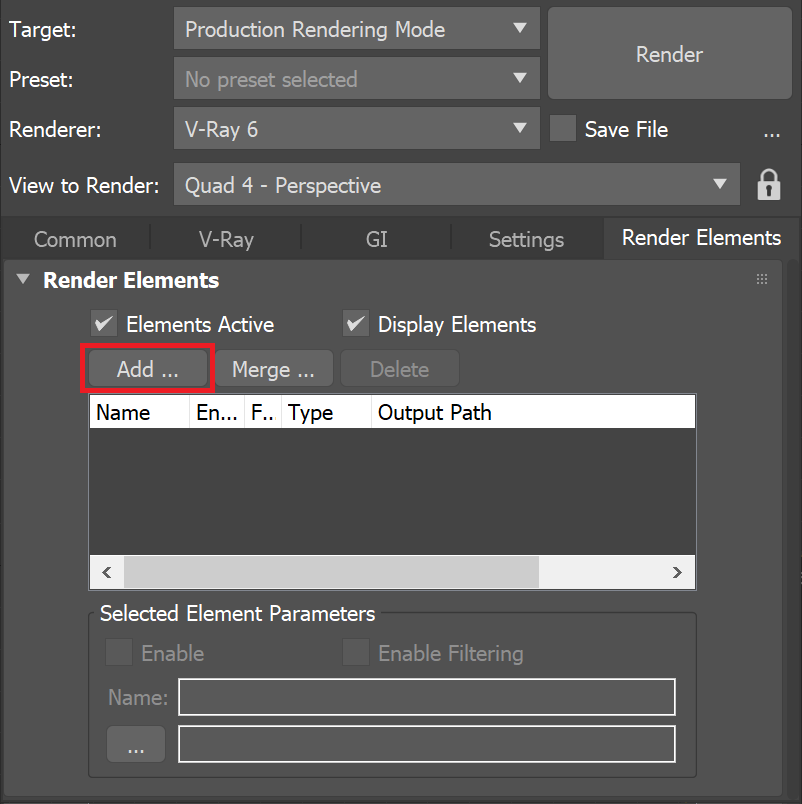This page gives some basic details about the Raw Refraction Render Element and how it is used in compositing.
Overview
The Raw Refraction Render Element is a color image that stores refraction information calculated from materials' refraction values in the scene. Surfaces with no refraction values set in their materials contain no information in the render element, and therefore render black.
In comparison, the Refraction Filter Render Element (VRayRefractionFilter) is a render element that indicates varying degrees of refraction in the scene, through brightness values in the image. Multiplying these two render elements together produces the VRayRefraction Render Element (VRayRefraction).
Note: To properly calculate the Raw Refraction Render Element, the Refraction Render Element must also be added to the list of render elements being calculated during the rendering process to properly determine all the refraction information in the scene.
Parameters
This render element is enabled through the Render Elements tab of the Render Setup window in 3ds Max and displays its parameters in a rollout at the bottom of the window:
VRayVFB – When enabled, the render element appears in the V-Ray Virtual Frame Buffer.
Deep output – Specifies whether to include this render element in deep images.
Color mapping – Applies the color mapping options specified in the Color mapping rollout (Render Setup window > V-Ray tab) to this render element. This option is enabled by default.
Multiplier – Sets the overall intensity of the render element, where 1.0 is the standard multiplier.
Denoise – Specifies whether to denoise this render element.
Common Uses
The Raw Refraction Render Element is useful for changing the appearance of refractive elements of a complete render inside a compositing or image editing application. For this example, the Raw Refraction RE and the Refraction Filter RE are used to tint and brighten the refractive materials in the scene. See how the render looks before and after compositing.
Underlying Compositing Equation
VRayRawRefraction x VrayRefractionFilter = VRayRefraction
Notes
- To properly calculate the refraction information in the Raw Refraction, Refraction Filter and Raw Refraction Filter Render Elements, the Refraction Render Element must also be rendered at the same time, even if it's not going to be used in the compositing process. Doing so enables all the refraction information to be included in the rendering calculations.






